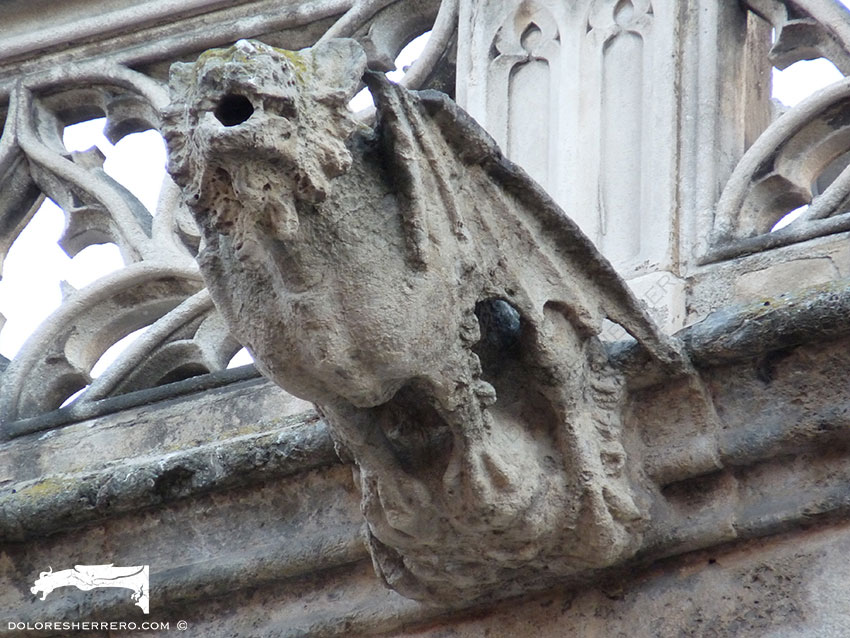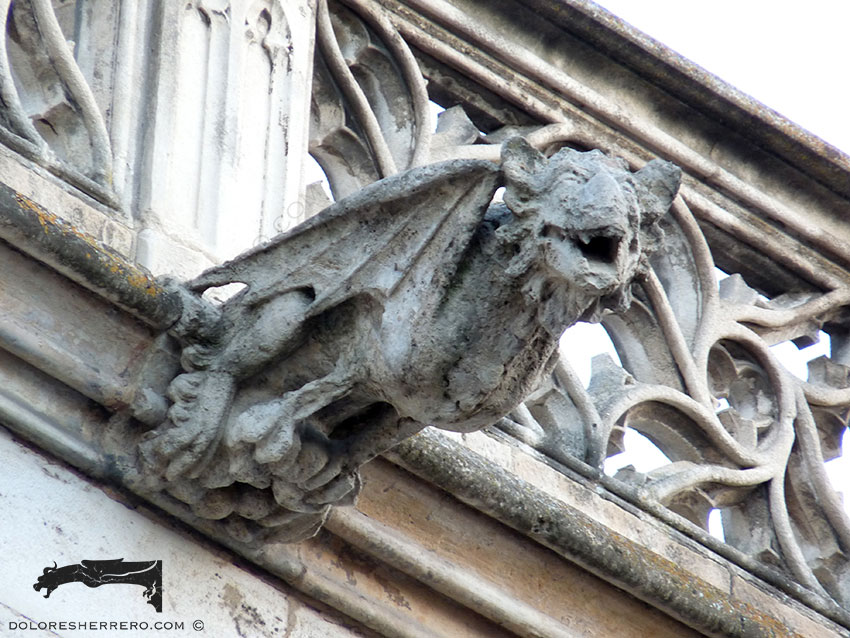The Lonja de Mar and Its Role in Medieval Perpignan
On our trip to Perpignan, in France, we discovered some fabulous gargoyles in the city.
On a stroll round Place de la Loge we saw the fantastic Loge de Mer, a medieval building dating from 1397 and extended in 1540, which was used for activities connected with maritime trade.
A magnificent example of Gothic secular architecture, the building follows the model of the exchanges you can see in Catalonia and Aragon. The building next door is the Hôtel de Ville or town hall.
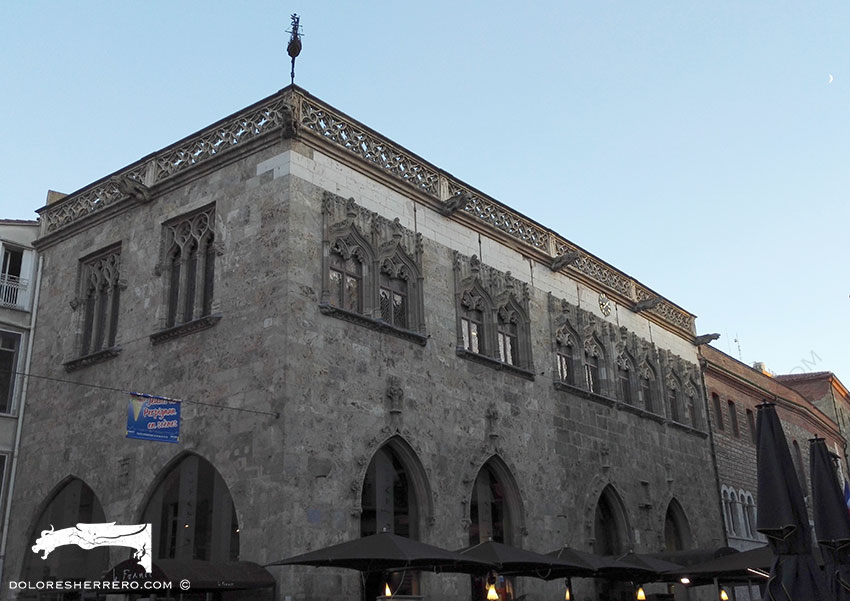
Description of Perpignan’s Gargoyles: Forms, Styles, and Symbolism
In this section of gargoyles, we’ll show you the six splendid gargoyles that surround the building. A few are quite badly eroded, but you can still see the figure and some interesting details. Each one is supported by a form of ornamental corbel.

Gargoyles Representing Monstrous Creatures
Although they are animal monsters, winged quadrupeds (refer to Gargoyles 1 and 2), some display details such as protuberances on the neck and chest, a drooping beard or fleshy chin, a goatee style beard and bat’s wings, all features that give them a demonic appearance (refer to Gargoyles 3 and 4).
Gargoyle 1
Gargoyle 2

Gargoyle 3
- Lonja in Perpignan (France)
Gargoyle 4
- Lonja in Perpignan (France)
Gargoyle Representing a Mythological Animal
One fantastic beast in particular stands out – a superb gryphon (refer to Gargoyle 5). A gryphon is a mythological creature, half eagle (the upper part) and half lion (the lower part). Depictions of gryphons date back to Antiquity (Babylon, Persia, Ancient India). Pliny (1st century) says they were originally from the land of the Scythians (northern Russia) and Aeschylus (6th-5th century B.C.) says they were from Ethiopia. Their two halves bestow on them all the attributes of the lion (king of the land) and the eagle (queen of the air). In Greece and Rome, they were considered to be tomb guardians; for the Greeks they were also an animal of light, and this is why they’re sometimes shown sitting at the feet of statues of Apollo. In Christian symbolism, the gryphon embodied both these natures (the eagle and the lion), making it one of the best emblems of the dual nature of Christ: the eagle head and chest represent the Saviour’s divinity and the lion’s body represents his humanity. The gryphon is also a symbol of wisdom and guardian of treasures, especially of emeralds. In terms of its negative powers, the gryphon was often used to represent Satan because of its raptor’s beak and its predator’s claws.
Gargoyle 5
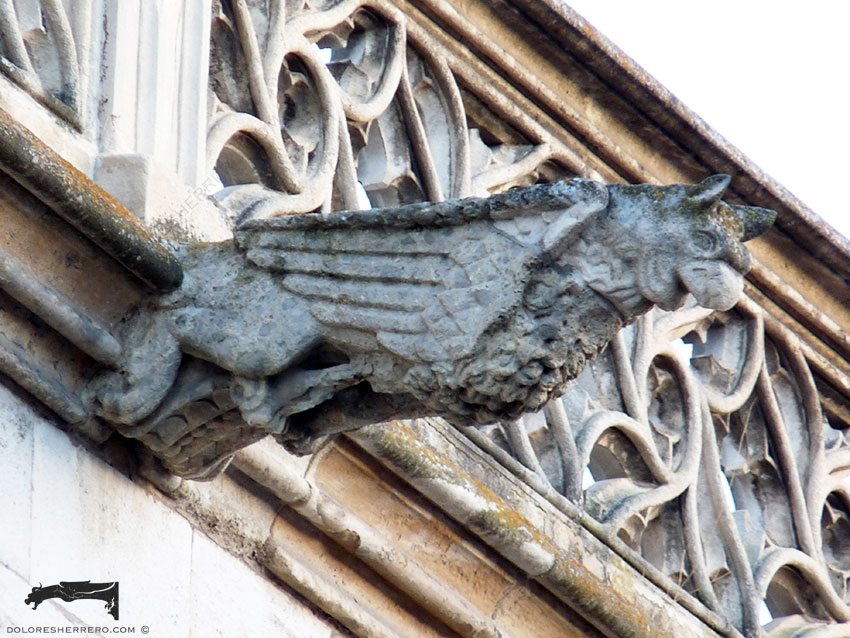
Gargoyle Representing a Real Animal
We also see the figure of a quadruped animal, dog-like in appearance (refer to Gargoyle 6).
Gargoyle 6

Civil Gothic Sculpture at Its Most Expressive
The gargoyles of the Loge de Mer in Perpignan form a magnificent ensemble of great thematic richness and sculptural beauty. As gargoyles belonging to a building of civil Gothic architecture, they represent an exceptional example of medieval art in an urban and non-religious context, thereby reinforcing the monumental character of the structure.
Bibliography
CHARBONNEAU-LASSAY, L., El bestiario de Cristo. El simbolismo animal en la Antigüedad y la Edad Media, vol. I, Palma de Mallorca, José J. de Olañeta Editor, 1997.

Doctor of Art History and researcher specializing in the study of gargoyles.
I am Dolores Herrero Ferrio, and my thesis, “An Approach to the Study of Gargoyles of Gothic Cathedrals in Castilla and León”, is dedicated to the study of these fascinating figures.
If you like gargoyles and art history, you will also enjoy my book, “The Gargoyle and Its Iconography,” a book I have written with great care for those interested in the world of gargoyles.
I have created my own Encyclopedia of Gargoyles, a Gargopedia to share with you, where you will discover all the secrets and wonders of these enigmatic sculptures.
I hope you enjoy this Gargopedia as much as I have enjoyed creating it, and remember that each gargoyle has a story to tell, and here you will discover them all.
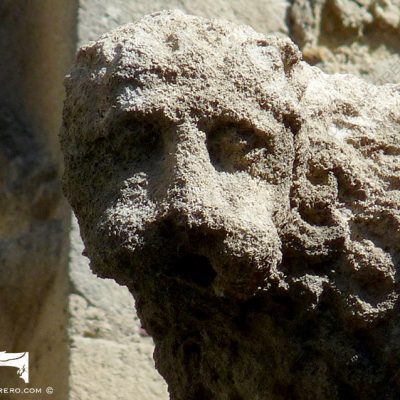 Gargoyles Shaped Like Lions: Symbolism and Representation
Gargoyles Shaped Like Lions: Symbolism and Representation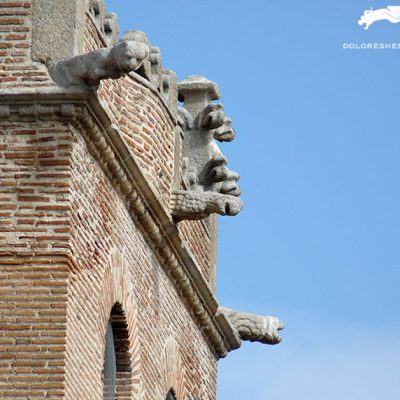 Gargoyles of Martín Muñoz de las Posadas (Segovia, Spain) as a Testament to Castilian Rural Art
Gargoyles of Martín Muñoz de las Posadas (Segovia, Spain) as a Testament to Castilian Rural Art Gargoyles and Unusual Animals: Part Two
Gargoyles and Unusual Animals: Part Two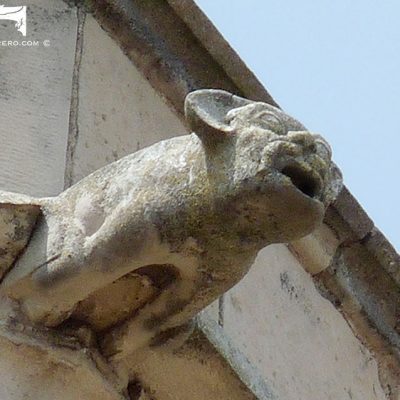 Gargoyles on the Seu Vella of Lleida (Spain): Guardians of the Fortified Cathedral
Gargoyles on the Seu Vella of Lleida (Spain): Guardians of the Fortified Cathedral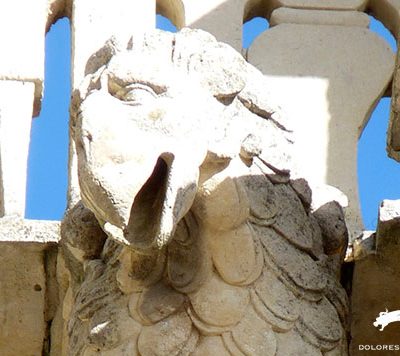 Gargoyles Shaped Like Eagles: Symbolism and Representation
Gargoyles Shaped Like Eagles: Symbolism and Representation

